5 Pricing Models That Boost Your Conversions
There are many pricing models that you can use to increase your conversions, here is a list of 5 pricing models you should be using.
If you are anything like me, Pricing might be the first thing you navigate to on a website. And as a developer or Manager or Designer or founder or even customer, its important to understand how these pricing model works?! This is especially true if you're looking to start a side hustle, working on pricing strategies or designs, or even build your own business from scratch.
I would like you to imagine yourself a founder of a SaaS business startup. The task in front of you is to price your product. How'd you do it? You may take some inspirations from your competitors in the same niche, right? But what if your business is not there yet or your business is unique than your competitors but compete in the same niche?
If you are scratching your head, that is totally okay! Prices can make or break any business. That is a harsh truth! But what if the model you're using for your product is leading people away from your product instead of attracting them? That's where this article comes in handy. We've compiled a list of 5 pricing models that will skyrocket your conversions!
Flat Pricing
The flat pricing model is the most basic and easiest to understand. It's basically the one-size-fits-all pricing model, where every customer pays the same price for your product or service.
It works great for simple products with no significant variations - like a pair of socks, for example. But it doesn't work well for more complicated products with different features, such as a smartphone or laptop computer.
Some SaaS businesses are doubling down on this pricing model. Can you guess why? It makes it super-easy as a customer to make a decision.
One of the such business is Basecamp. They are all-in-one tool to provide everything from Project Management to communications to storage. check out their pricing mode.

Tier based Pricing
Tier-based pricing is a type of pricing model where the cost of an item is determined by the number of units purchased. For example, if you want to buy a car, you can choose to purchase an economy car or a luxury car. The price of each unit differs based on its features and specifications.
For most the businesses, it provides stack based pricing, is simple words its just additional features stacked over the previous tier. You may have came across this model many models I'm sure.
Framer has adapted this pricing model perfectly with a crisp and concise points of features and offerings. Also, a neat little psychological nudge that Framer has adapted is to nudge user to the free model to try out the product before they opt-in for the paid version.
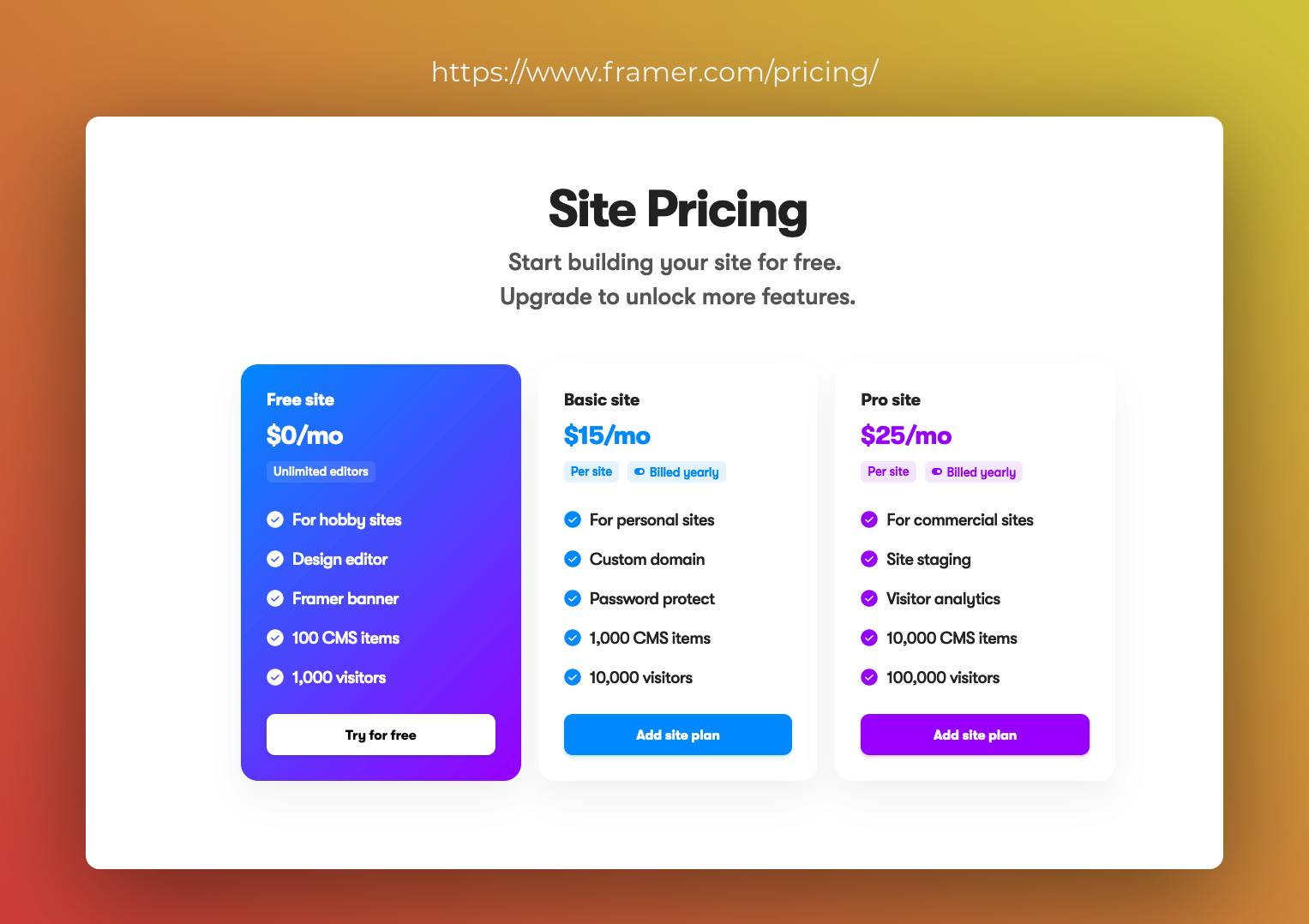
Usage based pricing
In simple words, Usage based pricing model is just pay for what you use. It really is as simple as that. There are several advantages of using the usage based pricing model for your business.
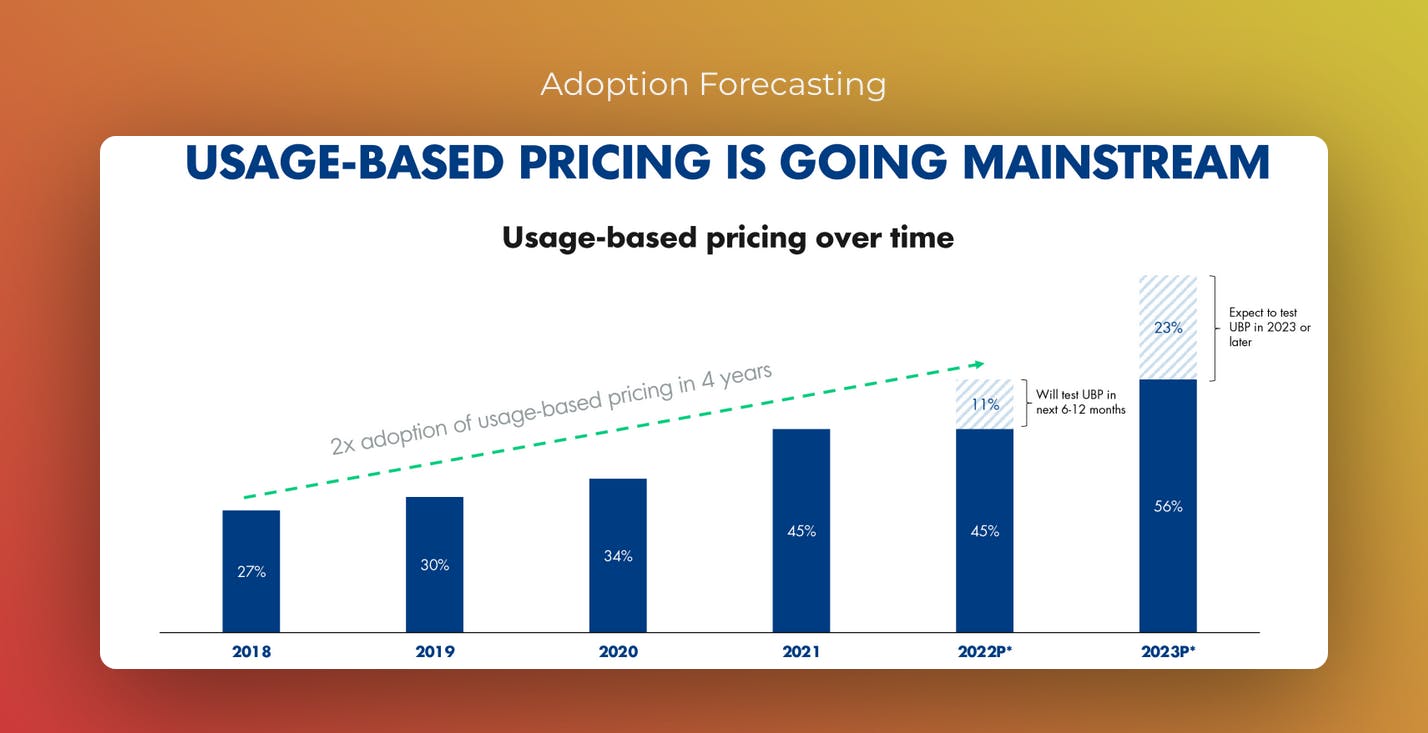
It encourages people to buy more rather than less. If people have to pay per item then they will be more likely to use fewer items than if they had one fixed price per month or year. For example, if you sell online storage then people will be less likely to buy 1TB when they only need 5GB or 10GB if they have to pay per GB rather than having a flat rate per month/year regardless of how much data they upload or download.
There are many businesses that come to my mind that follow this pricing model and have crazy conversion rates and they are (lets see if we think alike) Cloud based businesses.
But here is a SaaS business i like called ChartMogul. They have this neat little feature on pricing page that help prospects to choose plans based on the usage. Personally, i think its simple yet powerful.
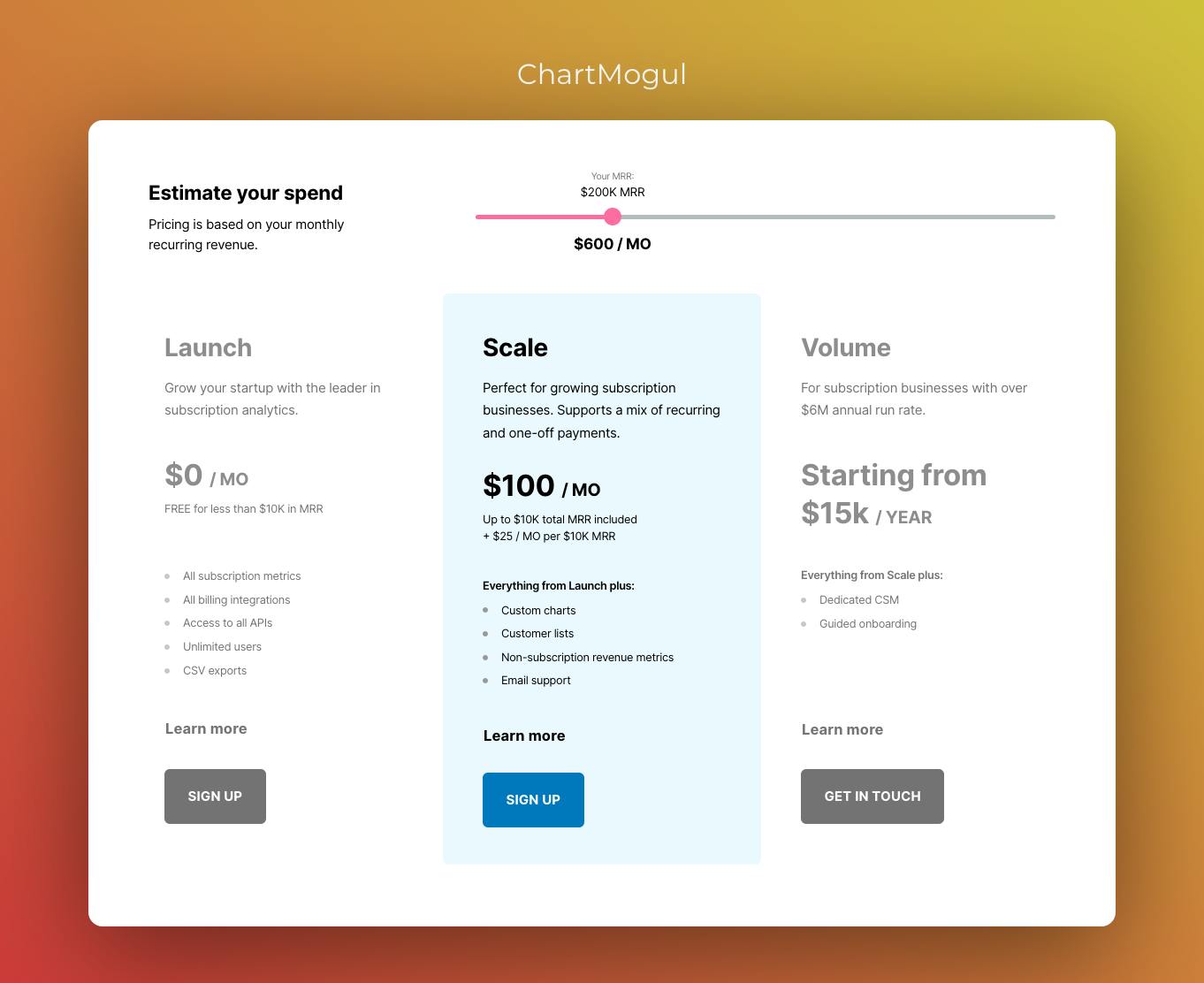
Usage + User-Based Pricing
Combining Usage based pricing model with User based pricing model is a powerful combination. If you combine these two models, then you can charge your customers based on how much they use of your product/service and how many users are using it. I am sure there are plenty of examples but here is one that comes to my mind.
Clickup is a tool to manage project management to documentations to collaboration for startups to enterprises. Clickup have deployed this pricing model so seamlessly and flawlessly to their pricing model.
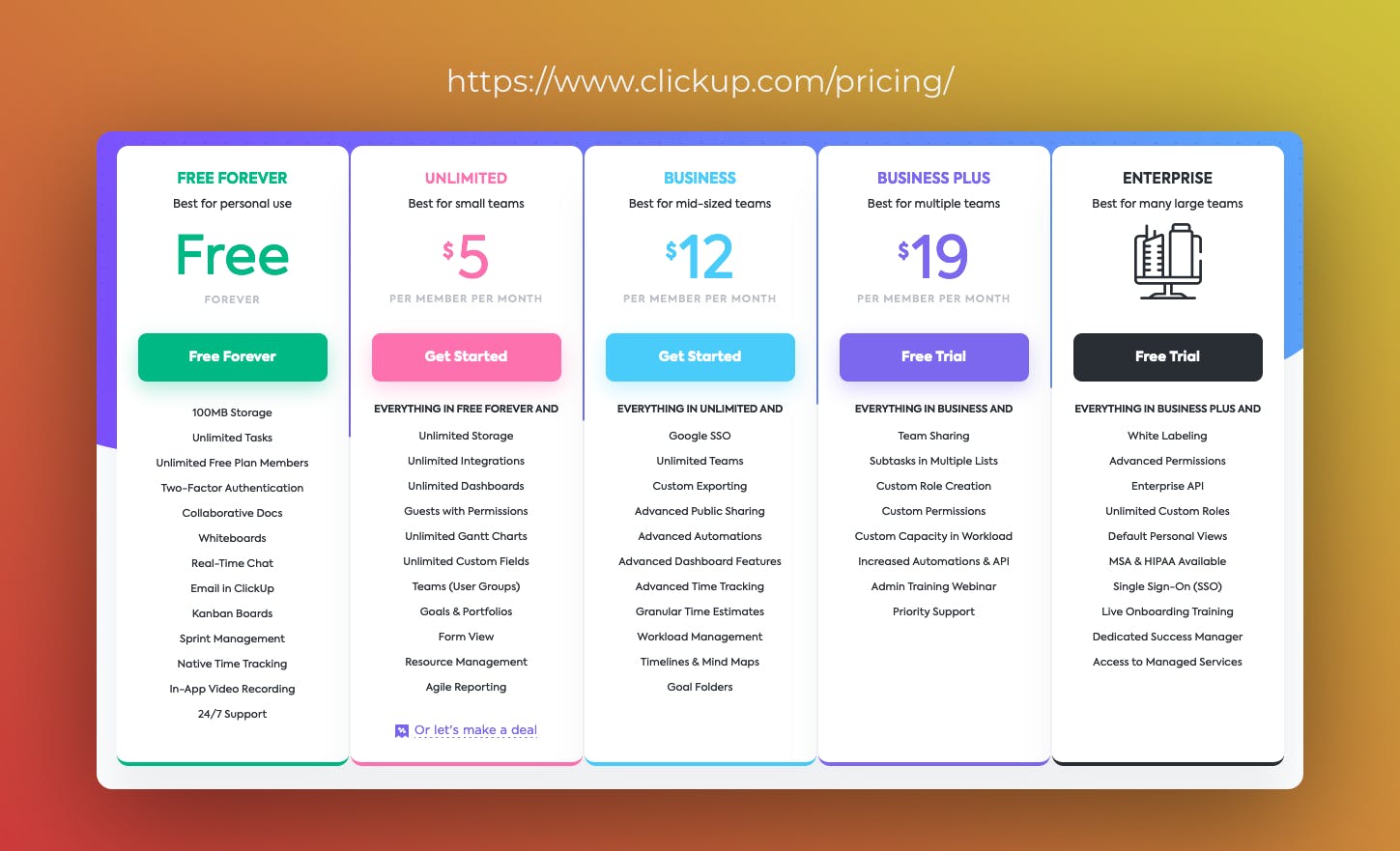
Moreover, Clickup have this neat little feature to make deals with them, where if you as a customer think that your requirement would not fit in any those pricing, you can justify your usage and team size, and Clickup will cut you a deal that fits you and your team better. Personally, I think Its so clever yet so powerful and effective.
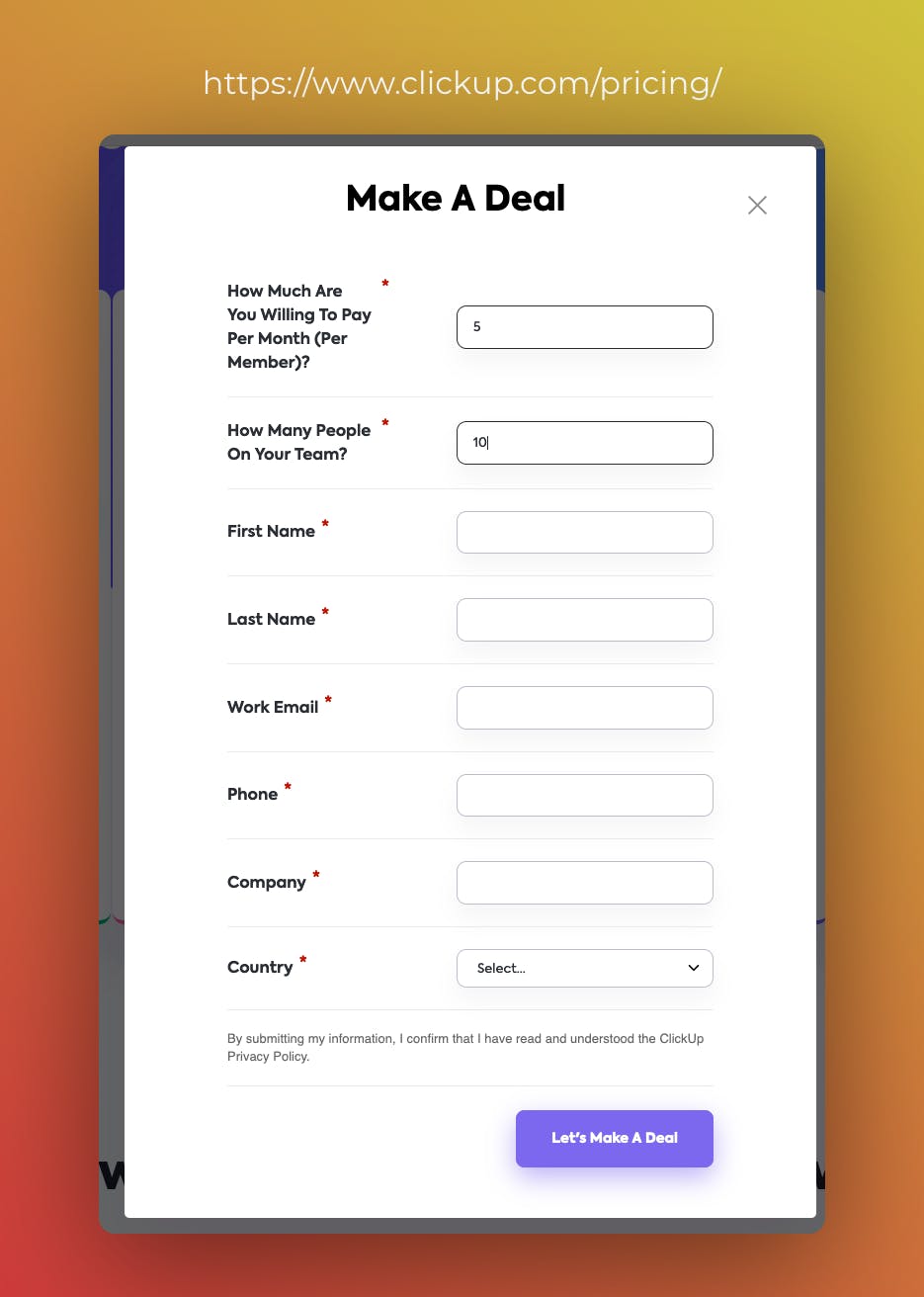
Lifetime Value/One Time Pricing
What if i ask you to imagine an era where you don't have to track one more recurring subscription for a product? Its just pay one time, and use it however you'd like to for its lifetime, forever.
The best example of one time pricing is when you buy a piece of software and then use it forever. It's similar to paying for a subscription, where you pay one price and then get access to unlimited resources.
The main advantage of one time pricing is that it allows you to focus on the value instead of focusing on the price. This makes it easier for customers to see what they're getting out of each offer without having to worry about how much money they're spending on it.
Appsumo is a software marketplace where you'd find lifetime deals to a product. Its like Gumroad but for applications and software. So SaaS businesses would come here and sell lifetime deals on this platform, hence a marketplace. Check out the pricing for one such product on AppSumo.

Conclusion
Did you feel that? The sudden urge to look up prices on a few of your favorite websites? That's the power of pricing psychology. By making your potential customers more aware of the price of what they're looking at, you can subconsciously influence them to make a purchase. In other words, if you want to skyrocket your conversions, it's a good idea to use one of the above pricing strategies.
There are two takeaways here: 1. We must understand the reason why customers buy from a business, 2. Understanding the psychology of pricing is crucial to convert more customers. Pricing done wrong may cost a business lots of profit. For this, business must consider the buying process customer undergo before they make a purchase and price your product accordingly. In other words, products must fit into that buying process.
If you're still here, I really appreciate your time and efforts. If you feel like I've added any value to your knowledge or experience, why not consider a follow or just leave a react? 🥳 👍🏼
Here is a little about me ✅:
In real life, I'm a Software Developer 🧑🏻💻 turned Entrepreneur 🚀 Being a Solopreneur, I had to wear many hats 🎩 from a Designer to Developer to Sales and anything in-between. And I write about those experiences I learned along the way! ✌🏼
